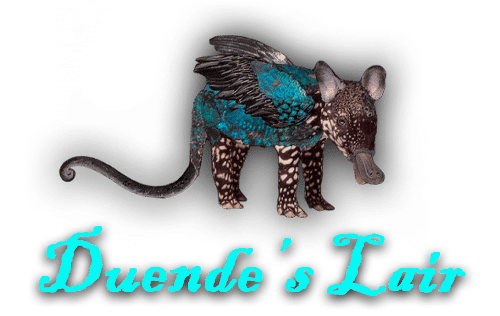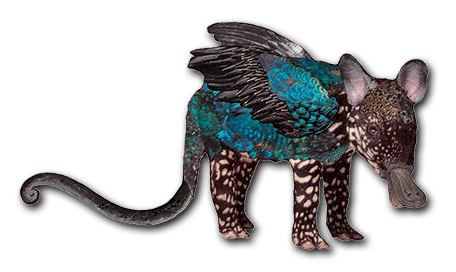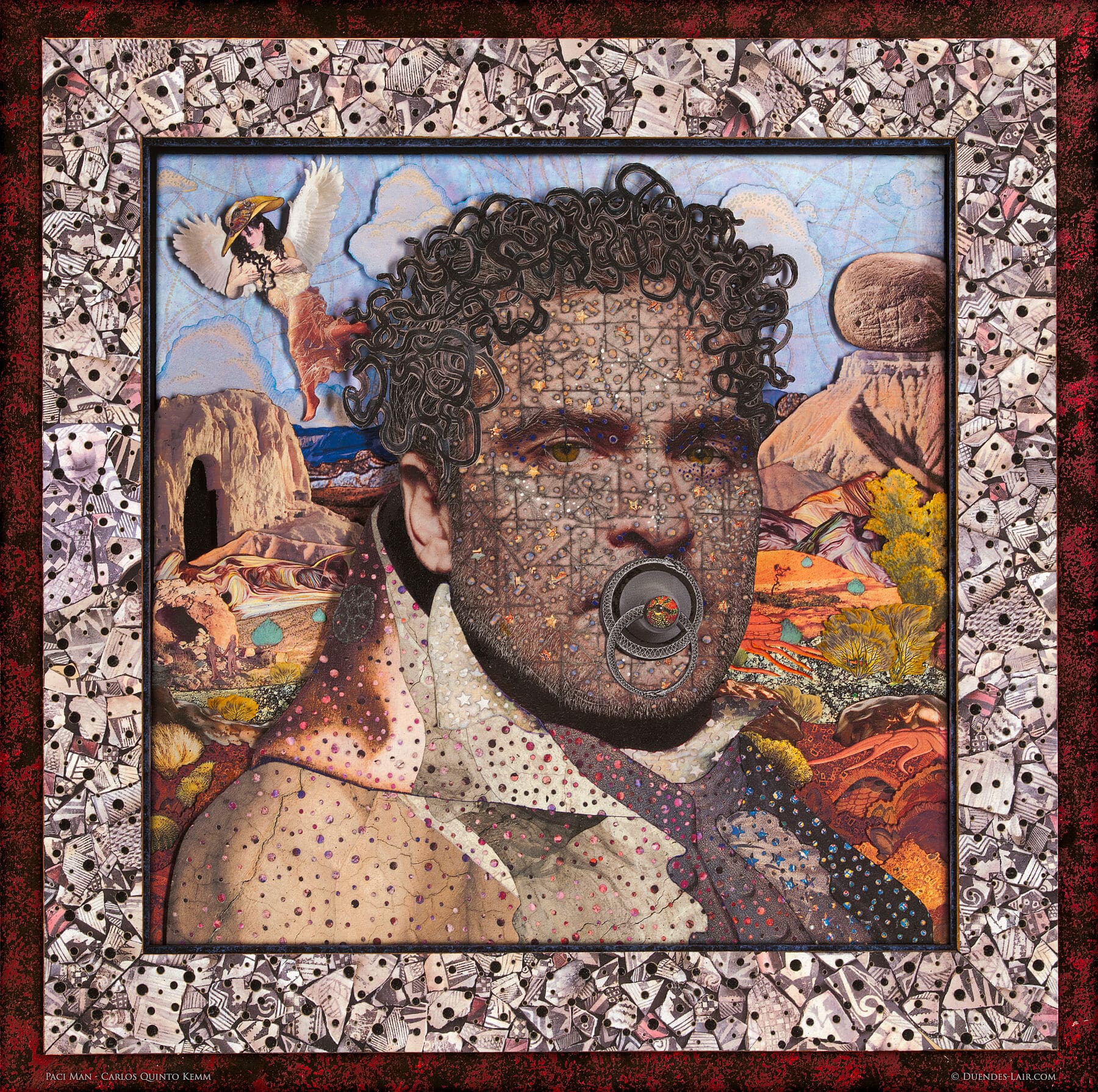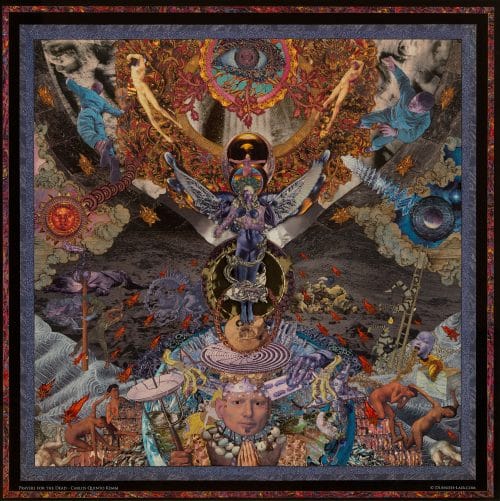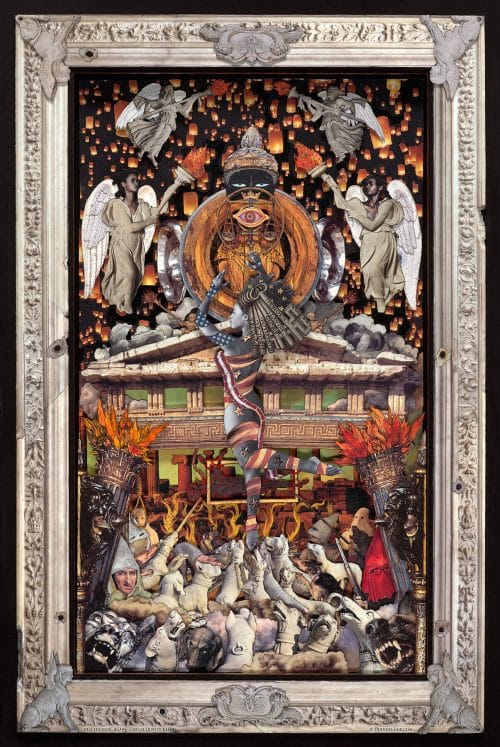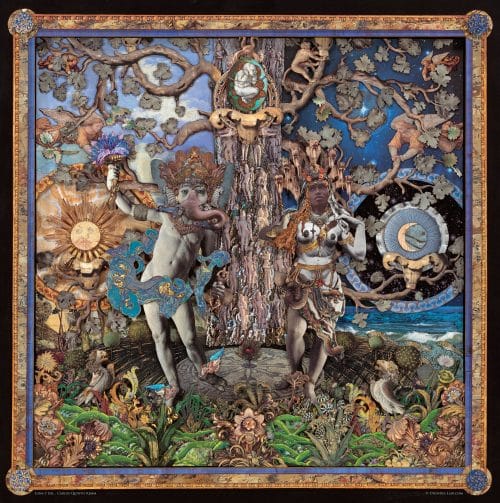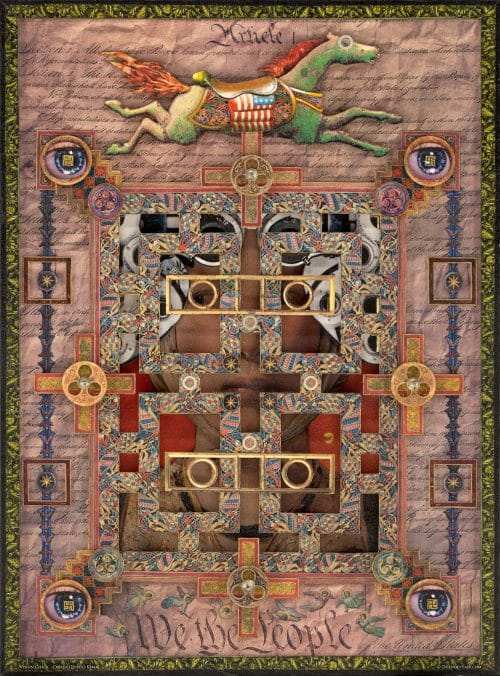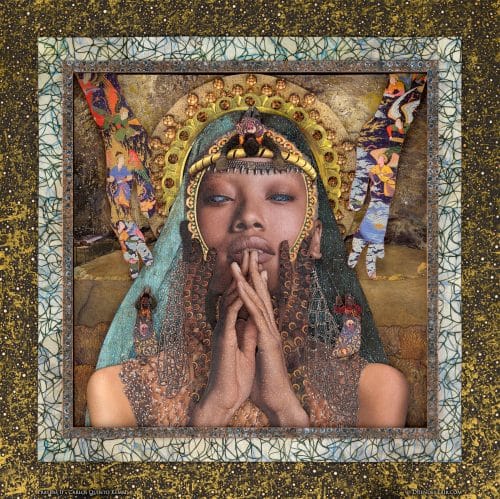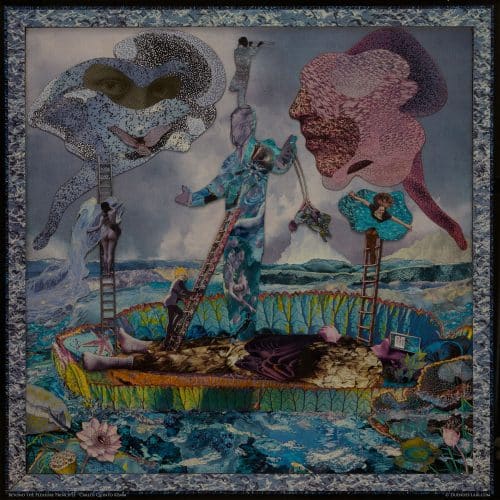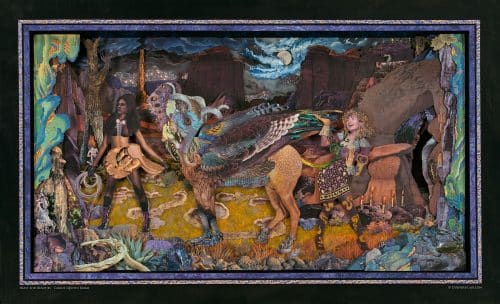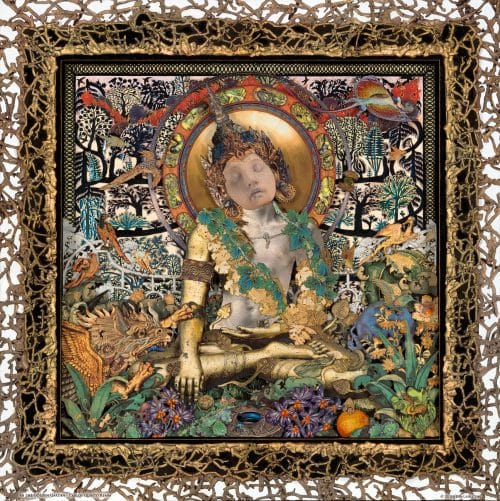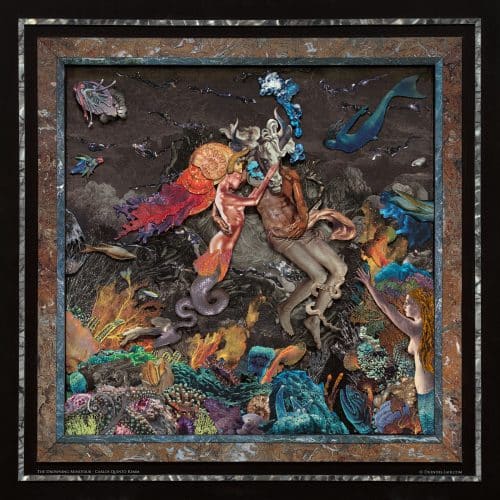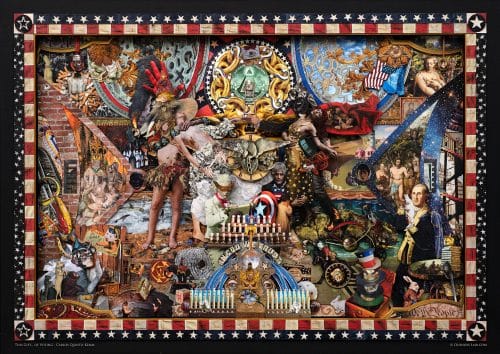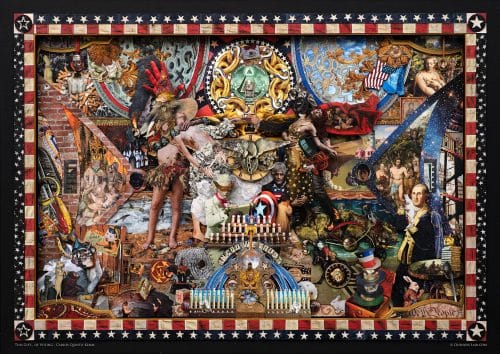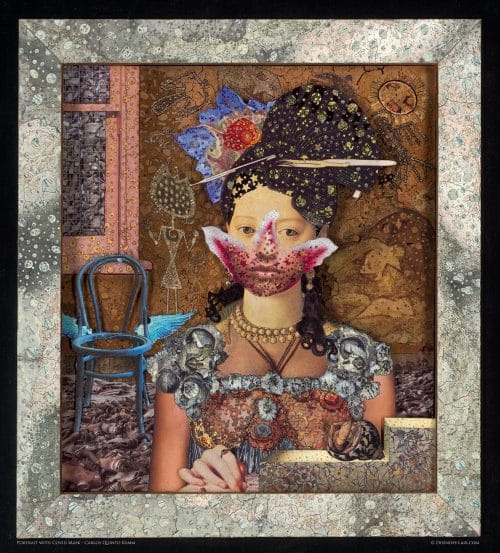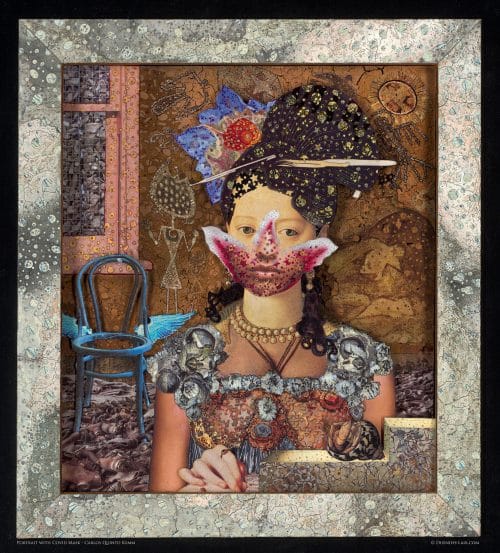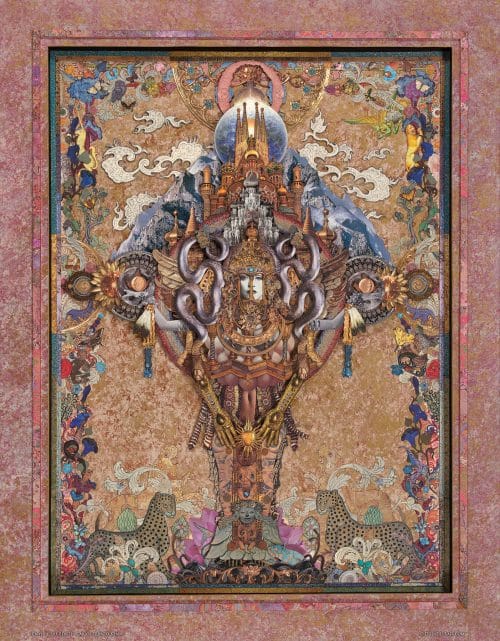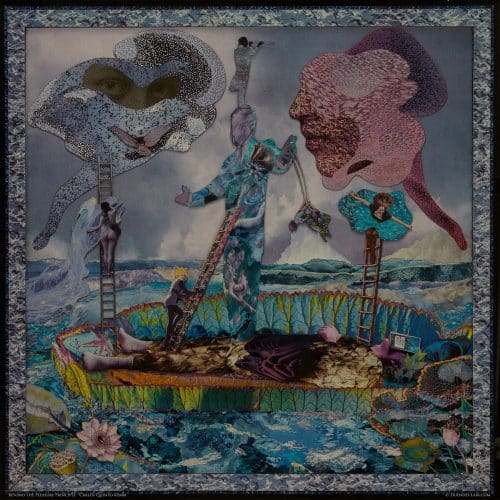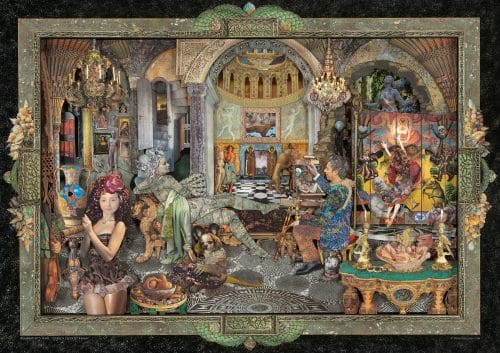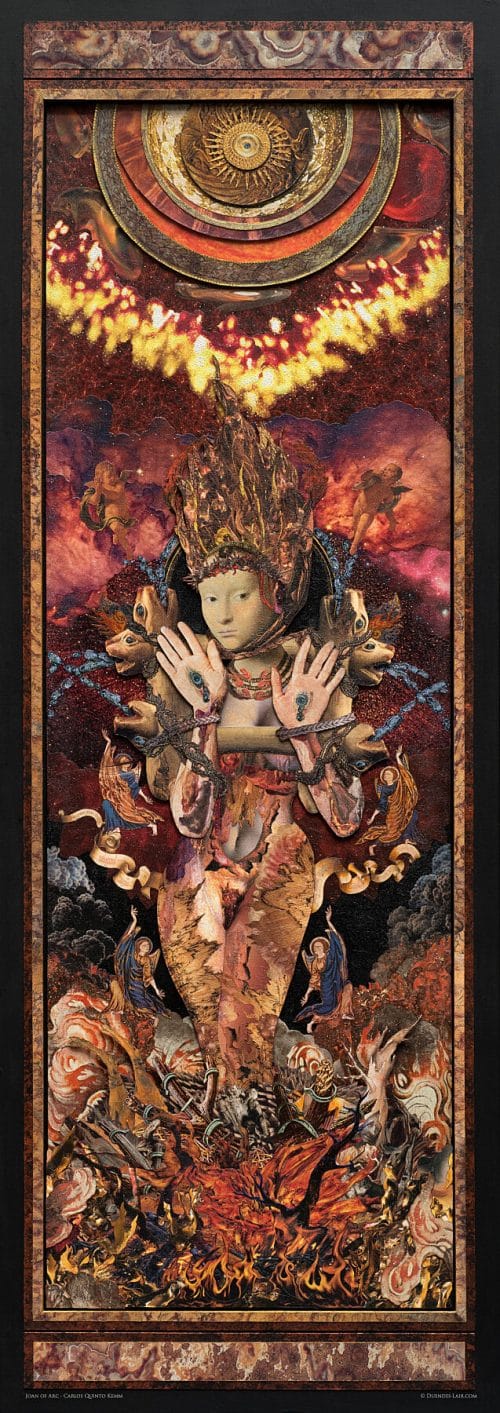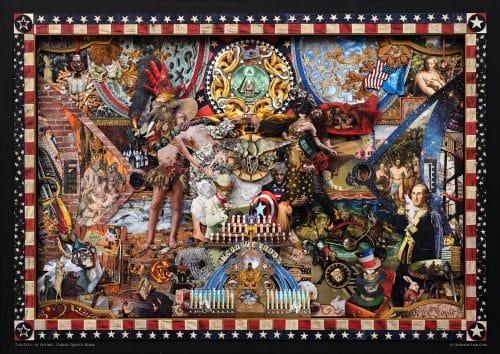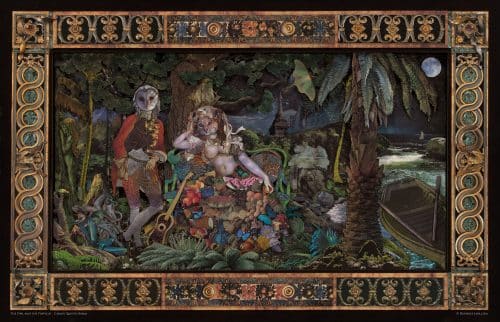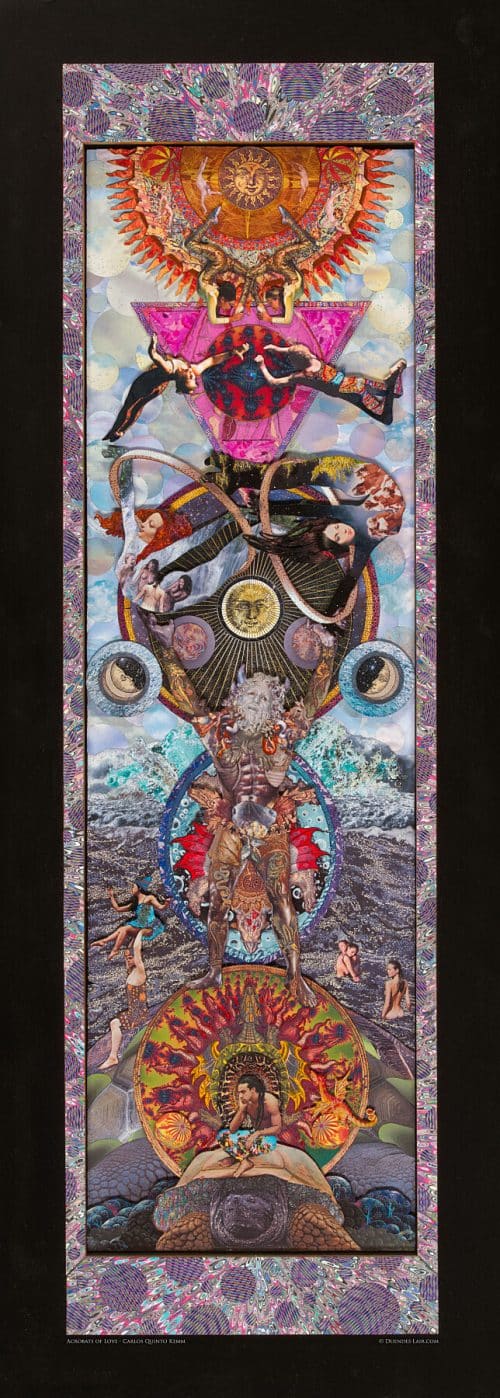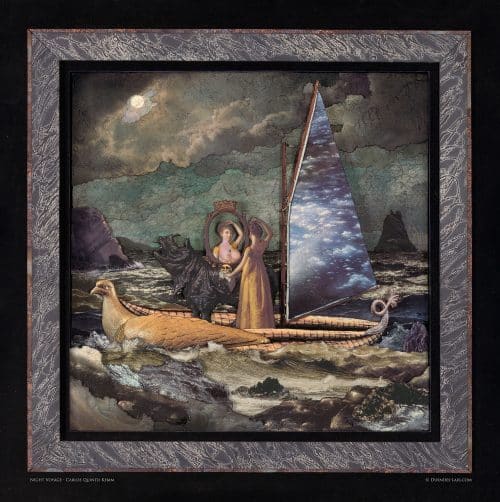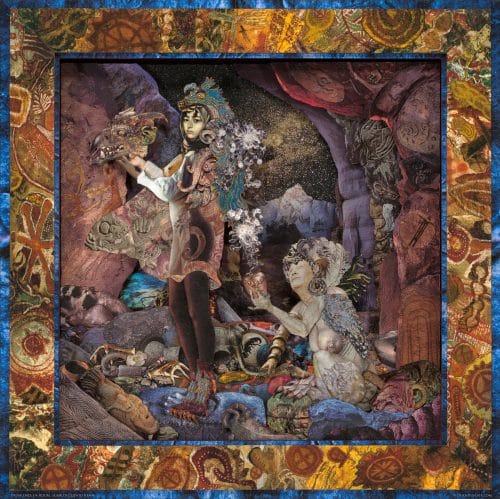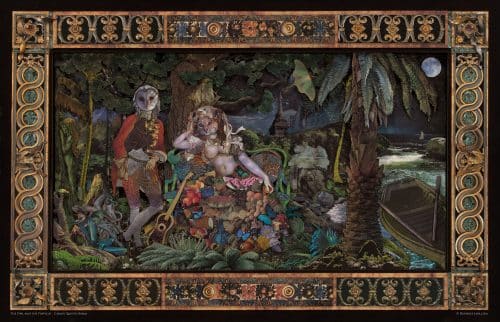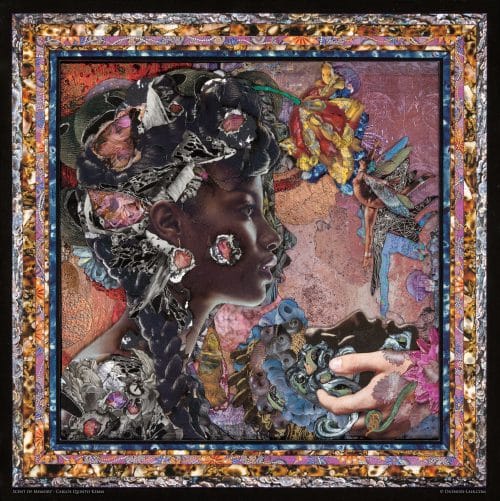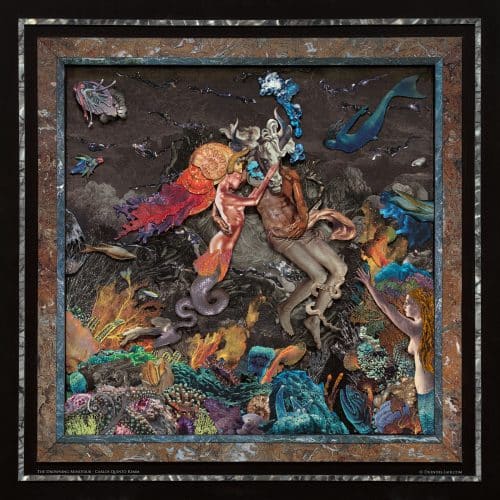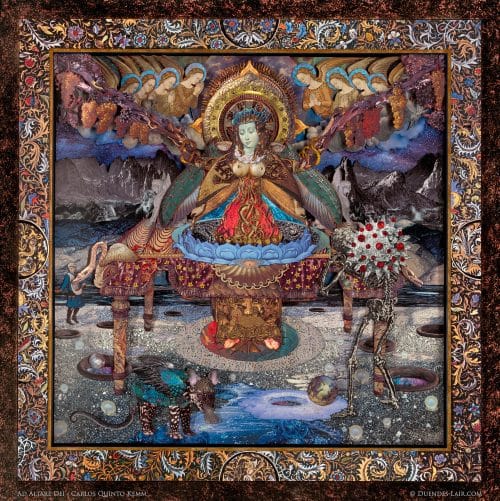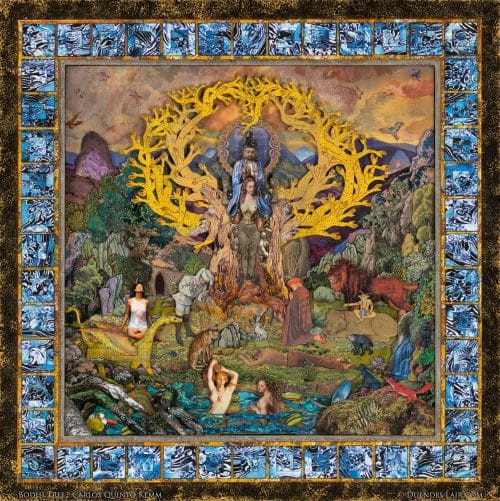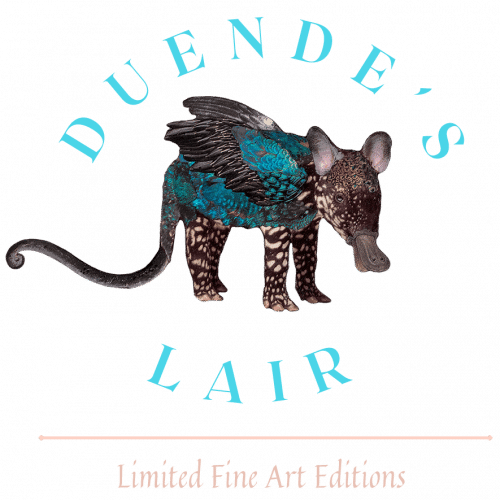Paci Man – Fuji Pearl
Price range: $48.00 through $270.00
Paci Man – Fuji Pearl
Price range: $48.00 through $270.00
Share Art With Your Friends & Family
Description
Carlos Quinto Kemm’s Paci-Man is a rich, layered narrative that delves into themes of identity, spirituality, war, and renewal. The portrait itself, featuring a face that is fragmented and multi-dimensional, compels the viewer to look beyond surface appearances and consider the complexities beneath. The layers of the man’s face seem to represent not just the external personas we wear but also the internal struggles we carry, suggesting that our true selves are often obscured by the masks we present to the world. This complex portrait draws us into a deeper exploration of who we are, inviting introspection about our personal and collective identities.
In the background, a Buddhist shrine lies in ruins, destroyed by war. Once a symbol of peace, tranquility, and spiritual refuge, the shrine is now nothing more than a shadow of its former self, ravaged by the chaos of conflict. This ruin serves as a poignant reminder of how war can obliterate not just physical structures but also the spiritual foundations of society. The image of the destroyed shrine creates a powerful contrast with the inner peace that the shrine once represented, suggesting that the search for harmony is often disrupted by external forces beyond our control.
Hovering above this desolate landscape is a pregnant angel, a figure both ethereal and enigmatic. Her pregnancy symbolizes the promise of new life, creation, and potential amidst the ruin. Yet, she hovers at a distance, somewhat detached from the world below, as if she is an observer of the destruction but also a harbinger of hope. The angel’s presence offers a sense of renewal and possibility, suggesting that from the wreckage of war and suffering, something new—perhaps a new understanding or new beginnings—can emerge.
On the mountaintop in the distance, Kemm includes an important and symbolic detail: a rock incised with the earliest known depiction of a human face. This ancient image, carved into the mountain itself, ties the painting to the deepest roots of human history and identity. The rock carving, possibly referencing prehistoric cave art, represents a moment in time when early humans first sought to capture their own image, marking the beginning of self-reflection and the quest for identity. Its presence atop the mountain creates a bridge between the past and present, suggesting that the search for self-awareness and spiritual understanding is an ancient journey, one that has been shaped by both human creation and destruction.
The title Paci-Man resonates deeply in this context. The word “pacification” suggests a quest for inner peace amidst the turmoil of the world. The painting, through its layered symbolism—of the fragmented face, the ruined shrine, the pregnant angel, and the ancient depiction of humanity—becomes a meditation on how we navigate the challenges of identity, loss, and the hope for renewal. The pacifying force may not be easy to attain, especially in a world marred by war and suffering, but it is a search that has been underway since the earliest days of human existence, as reflected in the ancient carving of the human face on the mountaintop.
Kemm’s use of collage techniques further enhances the texture and complexity of the piece, inviting the viewer not just to look at the painting but to feel its emotional and spiritual depth. Each layer, each element of the work—the ruined shrine, the angel, the ancient face—adds a new layer of meaning, challenging the viewer to reflect on their own journey of self-discovery, the impact of conflict on the human soul, and the possibility of spiritual rebirth even in the darkest of times.
In Paci-Man, Carlos Quinto Kemm creates a powerful visual dialogue that intertwines the personal with the historical, the spiritual with the physical, and the ancient with the modern. It’s a work that urges us to reflect on who we are, where we come from, and where we are going in a world that is both broken and full of potential for transformation. Through this evocative piece, Kemm asks us to consider the enduring search for peace and identity amidst the complexities of life, suggesting that even in the aftermath of destruction, there is always the possibility for renewal.
Additional information
| Frame | Print only, White, Black |
|---|---|
| Size | 30cm x 30cm, 11.9inches x 12.0inches, 30cm x 30cm, 11.8inches x 11.8inches, 40cm x 41cm, 15.9inches x 16.0inches, 40cm x 40cm, 15.8inches x 15.8inches, 51cm x 51cm, 19.9inches x 20.0inches, 50cm x 50cm, 19.7inches x 19.7inches |
For Your Consideration
